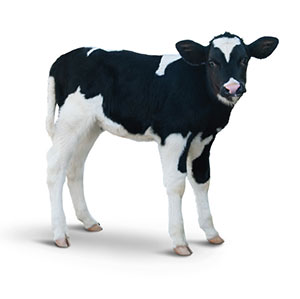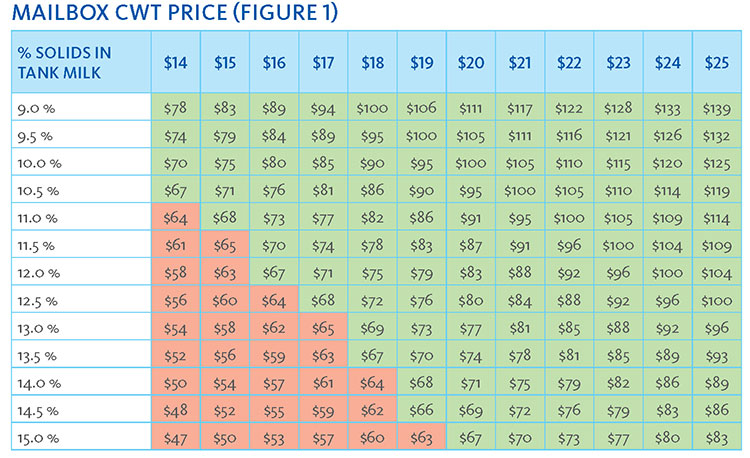
There are many factors to consider when choosing to feed milk replacer or whole salable tank milk. Some of these factors include: distance of transportation for feeding, cost and maintenance of a pasteurizer system, tank milk cleanliness and percent solids, and nutrient availability and/or deficiency. Surprisingly 6 important nutrients that support growth and health of the calf are deficient in whole milk. Calf milk replacer (CMR) is nutritionally complete and has the proper ratio of protein to fat, which will improve average daily gain, mammary and tissue development, starter intake at weaning, and decreases overall mortality and morbidity rates. If properly mixed, CMR also provides consistent solids levels and is free of harmful bacteria and pathogens.
It is no secret that farms everywhere are struggling financially and we
need to also address the economic advantages of feeding CMR. Figure 1 is a chart that illustrates the break-even price to feed CMR versus tank milk based on current milk price per cwt and percent solids of the tank milk.
For example, at 12.5% solids and
$18/cwt milk price, it would be economically more beneficial to buy a bag of CMR as long as it is under $72/bag. That being said, if you purchase CMR for $65/bag and plan to feed for a high-performance level at 2.5 lb. of solids per day for 8-9 weeks (3 × 50
lb. bag of CMR per calf) you would be saving $21/calf (3 × $7 difference). If the milk price is down to $14/cwt, however, the price per bag would need to be under $56, but if milk hits $20/cwt again, this increases to $80/bag.
How does the percent solids of the tank milk affect this scenario? After collecting percent solids data from 16 dairy farms in Western New York the average percent solids fed to calves for salable tank milk was 12.5%. Only one dairy averaged 13.5%, this was a Jersey herd. This is important to determine how much money you could save feeding milk replacer. Again, at $18/cwt and 12.5% solids the break-even price per bag is
$72, but if the farm tests lower at just 11.5% solids in their tank milk, the break-even price per bag increases with $6/bag. If your milk solids and mailbox CWT price break-even point ends up in the green (figure 1), it is economically more beneficial to buy a bag of CMR (at $65 per 50 lb. bag), than feeding whole salable milk, in addition to all the other aforementioned benefits of CMR.

Therefore, it is vital to know the percent solids of tank milk on your farm to effectively use this chart. Either a digital or optical BRIX refractometer can
be used to determine the solids. The percentage solids calculation for tank milk = BRIX reading + 2 (for example,
if the BRIX is 10, the tank milk has 12% solids). Please contact your regional Denkavit professional for assistance, we are here to help.






